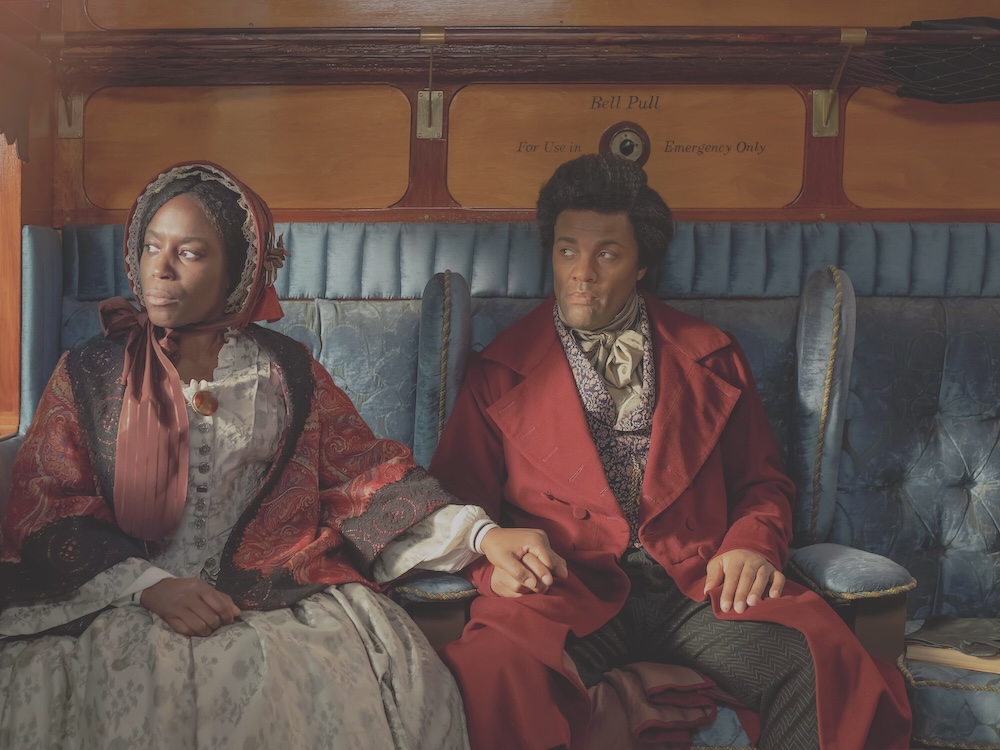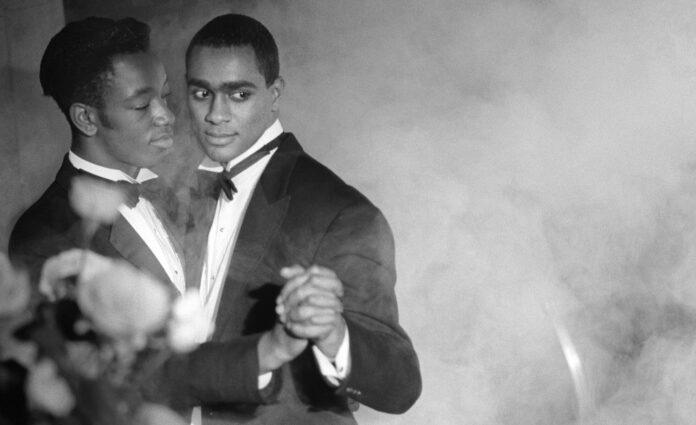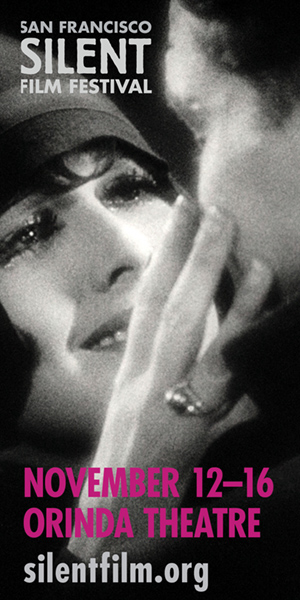The de Young Museum presents the work of British artist and University of California Santa Cruz professor Isaac Julien in his retrospective, I Dream a World (runs through July 13) The filmmaker and artist is most known for his ambitiously researched and elaborate multi-channel installations, many of which feature more than three channels of gorgeously shot and produced narrative work.
Despite being Julien’s first major Bay Area museum exhibition, local residents may have seen his installations “Playtime” (2014) at Fort Mason Center for Arts and Culture in 2017 and “Lessons of the Hour” (2019) at McEvoy Foundation for the Arts in 2020.

Featuring work over a 25-year span and 10 major installations, the de Young exhibition coalesces on two major themes: works that cinematically and narratively center place, dislocation, and journeys and works that reimagine historical moments within Black culture. Indeed much deserved attention has been paid to Julien’s “Lessons of the Hour,” that focuses on the oration of the abolitionist and activist Frederick Douglass, and “Once Again . . . (Statues Never Die)” (2022), that posits the ideological perspectives of the Harlem Renaissance writer Alain Locke and collector and founder of the Barnes collection, Alfred C. Barnes. Beyond these recent and highly acclaimed works, the de Young takes the opportunity of a retrospective to showcase the early foundations of Julien’s works with “Looking for Langston” (1989) and “Baltimore” (2003).
Installed near the entry for the exhibition, “Looking for Langston” excavates and reimagines Queer Black identity in the Harlem Renaissance and the Black Arts Movement (BAM). Titularly and in the film, Julien focuses on Langston Hughes (1901-1967), poet, political activist, and seminal figure in the Harlem Renaissance. As Hughes publicly advocated for Black cultural expression in tandem with economic and social change, his sexual orientation was shadowed, despite being suggested in some of his writings and amongst his social circles.
Through archival footage of 1920s New York along with Harlem Renaissance and BAM artists, artworks, and writers, Julien sets the context for an imaginary and glamorous queer social club. In striking black-and-white footage, men dressed in tuxedoes sip cocktails while signaling their romantic and sexual desires through slight glances and poses.

Throughout the film, Julien pulls from openly gay seminal Black authors James Baldwin (1924–1987), Essex Hemphill (1957–1995), Bruce Nugent (1906–1987), and Hilton Als (1960– ). The voice-over poetry and prose posit the creative and political goals from the Harlem Renaissance and the rapacious demand for Black artists who while “in vogue” during the Harlem Renaissance were abandoned when the art world’s avant-garde appetite for novelty wore off. As the narration bolsters Black collective and personal identity, the suggestions move between Black pride, love, desire, and sexuality, which eventually met with the anxiety of the AIDS epidemic.
Moving from social club to sexual encounters, Julien’s highly stylized black-and-white imagery strongly evokes Robert Mapplethorpe’s photographs, whose sexually charged imagery resulted in the cancellation of his 1989 Corcoran Gallery exhibition and obscenity charges for his 1990 Cincinnati Contemporary Art Center exhibition.
In addition to the aesthetic reference, a white male character in the film, suggestive of Mapplethorpe himself, suggestively glances and signals to a Black man, pays for a sexual encounter, then literally walks amongst enlarged images from Mapplethorpe’s “Black Book” (1986), a book of photographs of Black men in a variety of poses, including some explicitly sexual content.
Help us save local journalism!
Every tax-deductible donation helps us grow to cover the issues that mean the most to our community. Become a 48 Hills Hero and support the only daily progressive news source in the Bay Area.
As the artist Glenn Ligon’s “Notes on the Margin of the Black Book” (1991-93) critiques Mapplethorpe’s white male gaze, Julien’s work underscores the place where visuality turns into fetishization, whilst confronting the erasure of LGBTQ+ histories. While not addressed in Julien’s film, Mapplethorpe’s death from HIV/AIDS complications in 1989 adds another point where history weaves its way into Julien’s work and the film presents the quandary of negotiating where censorship, the historic erasure of Black queer culture, the fetishization of Black male bodies, and the trauma of the AIDS epidemic all coalesce.

As the exhibition progresses, Julien’s use of historical genres moves toward the latter half of the 20th century with “Baltimore”( 2003). In the spirit of the blackxploitation genre of the 1970s, Julie’s film references how the ideology and urgency within the Civil Rights Movement, Black power movement, and Black Panther Party shaped artistic forms with gritty, powerful, and dramatic Black lead characters.
Continuing to blur the boundaries between narrative cinema and historic moments, “Baltimore” stars director Melvin Van Pebbles and a confident Black female counterpart, reminiscent of Pam Grier and Angela Davis. Dressed in period 1970s costumes, the two characters strut down the streets of Baltimore through the Walters Art Museum, the Contemporary Museum, and the Great Blacks in Wax Museum.
In the museum Great Blacks in Wax, Julien’s camera pans through the space to see seminal Black historical figures in politics, science, and the arts, a testament to the achievements of Black men and women, one of whom is Van Pebbles. On the three screens Julien presents Van Pebbles’ wax figure and the actor, standing in comparison to each other, one alive and mobile, the other frozen in time and motion.
If museums are to reflect Black culture, history, and individuals, the system of representation is altered when Van Pebble faces his uncanny wax resemblance. With an Afrofuturist flair, the woman encounters a control room and a countdown is heard. With a swipe of her palm, the world becomes enveloped with a blue filter and the woman enters an alternative dimensions with spectacular powers.
As “Looking for Langston” and “Baltimore” merge historical figures and genres along with imaginative narratives, Julien mixes time to reimagine, activate, and question history. Throughout the retrospective, Julien tell complicated histories that verge off in tangents and circle back around. While these departures may be challenging for viewers, it captures the challenges, if not impossibility, of portraying history as linear and easy, especially for communities that have been historically erased, displaced, and have had to claim authorship of their own stories.
I DREAM A WORLD runs through July 13. de Young Museum, SF. Tickets and more info here.




